 |
 |
 |
 |
Cross-Cultural Perceptions of the Cultural Landscape in American Suburban-Strip Chinatowns. |
 |
 |
 |
 |
 |
This first study of suburban-strip Chinatowns as cultural landscapes was identified using the process shown in the flow diagram. |
 |
 |
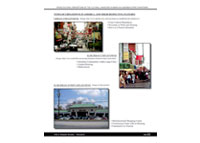 |
 |
 |
The types of Chinatowns currently found in America are: Urban; Suburban; and the newest of the three: "Suburban-Strip." Each has distinctive characteristics. |
 |
 |
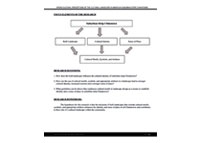 |
 |
 |
This first study of suburban-strip Chinatowns centers on how the inclusion of cultural motifs, symbols, and appropriate artifacts enhance their sense of place and value as cultural landscapes. The research framework includes built landscape, cultural identity, and sense of place. |
 |
 |
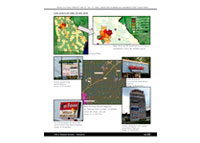 |
 |
 |
The Atlanta region was selected for this research for two reasons. One, it has a large Chinese population. Two, the Buford Highway, called the "International Corridor" of Atlanta, has a diversity of establishments that cater to the Chinese community |
 |
 |
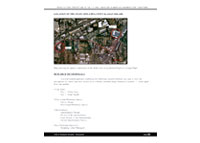 |
 |
 |
Mixed-method approach combining case studies, visual preference studies, and qualitative methods (e.g., on-site surveys and key-informant interviews) was used to elicit the perceptions of visitors and store owners in two Atlanta suburban-strip Chinatowns located 1.17 miles apart from one another. |
 |
 |
 |
 |
 |
The survey instruments were prepared in both Chinese and English for the on-site survey. The questionnaires were distributed on-site to participants using systematic sampling during 2-hour periods in the morning, afternoon, and evening of August 19-21, 2006. |
 |
 |
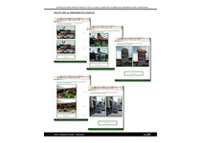 |
 |
 |
Additional information was obtained from two sources. Key-informant interviews were conducted with the managers of both sites, and pilot visual preference survey using non-Chinese graduate students and Chinese students and parents was administered. |
 |
 |
 |
 |
 |
 |
 |
 |
 |
 |
|
|
 |
Project Narrative
Historically, Chinatowns serve as centers
of social, economic and cultural activities for Chinese
immigrants and Chinese Americans. An emerging type of
Chinatown is the suburban-strip Chinatown. Unlike its
urban and earlier suburban counterparts, suburban-strip
Chinatowns are non-residential, multi-functional centers,
which mainly cater to the basic, utilitarian needs of
Chinese communities. This is the first study of suburban-strip
Chinatowns as cultural landscapes, as no similar studies
were discovered in a comprehensive literature review.
Research Problem
The forms of cultural
landscapes known collectively as “Chinatown”
have evolved in North America since their inception
in the 1880’s ‘Gold Rush’ period in
the American West. Chinese immigrants today do not depend
on an urban Chinatown as they did in the past. More
affordable houses outside of the urban core provide
for a better life and access to better community services
to immigrants. The suburban “Chinatown”
evolved in 1970’s in a number of major metropolitan
areas. Newer Chinese immigrants chose to live in communities
that are multicultural. Out of these new living conditions
of current Chinese populations in North America, the
suburban-strip Chinatown was born.
While the suburban-strip Chinatown has
strong cross-cultural influences, they are often indistinguishable
from traditional, suburban-strip shopping centers. The
anonymity of such centers engenders a hurdle that faces
suburban-strip Chinatowns in terms of their function
as cultural landscapes. Such sites are easily ignored
by academics and researchers who have failed to examine
whether or not such centers serve as cultural centers
for large numbers of suburban, Chinese nationals and
Chinese-Americans much like their urban counterpart
did for earlier populations.
There is a need for research showing if
decorative elements of the physical environment will
have measurable influence on the preferences and perceptions
of shoppers, visitors, as well as store owners in suburban-strip
Chinatowns. This research could lead to increased recognition
of the impact of suburban-strip Chinatowns as cultural
landscapes. Moreover, additional research is needed
on how landscape elements can be used to enhance the
sense of place of suburban-strip Chinatowns and thereby
increase the satisfaction of users of the suburban-strip
Chinatowns.
Relationships investigated
A major goal of this research is to elicit
the public’s perceptions about suburban-strip
Chinatowns. An additional goal is to identify the reasons
users select suburban-strip Chinatowns over other venues.
The final research goal involves the issue of including
landscape elements to enhance the cultural identity
and sense of place of suburban-strip Chinatowns. To
address these goals, this research seeks to find answers
to the following questions.
- How does the built landscape
influence the cultural identity of the suburban-strip
Chinatown?
- How can the use of cultural motifs
in a landscape lead to stronger cultural identity
and increased tourism?
- What guidelines can be drawn that
emphasize cultural motifs in landscape design as a
means to establish identity and sense of place in
the suburban-strip Chinatown?
Method of inquiry
To address the above issues, the
research used a mixed-method approach. Techniques were
combined from psychology and design evaluation (e.g.,
case studies, pilot visual preference studies) and qualitative
methods (on-site questionnaires, key-informant interviews)
to elicit and compile information about the perceptions
of shoppers, visitors, and store owners on suburban-strip
Chinatowns.
Results of research
- Results drawn from the responses to
the questionnaire and pilot visual preference survey
data indicated that the presence of Chinese motifs
and Chinese garden features enhance the perception
of spirit of place in suburban-strip Chinatowns. The
data, however, also suggested that the absence of
such Chinese motifs can diminish the sense of place
to a degree where all cultural association is lost.
- Results drawn from observations by
the researcher indicated that if facilities for social
interaction are provided, social life do occur in
the suburban-strip Chinatowns studied.
- Results from this research indicated
that suburban-strip Chinatowns serve utilitarian functions
similar to suburban-strip shopping centers. The research
data strongly suggest that a suburban-strip Chinatown
with a Chinese motif, Chinese-themed landscaping,
and facilities for Chinese social activities offers
more than just utility and functions as a cultural
resource.
- Results from this research strongly
indicated that not all suburban-strip Chinatowns are
cultural landscapes; however, suburban-strip Chinatowns
that meet the identifiable characteristics established
as the criteria as defined in the literature review
of this research are functioning as cultural landscapes.
- The provision of
social and educational opportunities are important
components for suburban-strip Chinatowns to serve
as cultural landscapes in their community.
Conclusions
Based on the findings generated
in this research, the following conclusion is evident.
The creation of a built landscape that includes cultural
motifs, artifacts, within an appropriate landscape,
and one that provides spaces and facilities for social
interaction and education, enhances the identity and
sense of place in a suburban-strip Chinatown and makes
such a strip center analogous to older Chinatowns in
their cultural value to the community.
Future Research
The following list establishes a framework
for additional studies that will enhance the knowledge
of a new and emerging form of cultural landscape that
is significant to immigrant populations.
- What specific Chinese cultural motifs
and landscape elements best enhance the cultural identity
of a suburban-strip Chinatown?
- How do cultural landscapes educate
communities about themselves? How does a Chinese school,
Chinese-language bookstore, or Chinese-language newspaper
educate both children and adults in a community of
their culture?
- How are utility, education, and recreation
linked in the creation of a cultural landscape? What
does each component contribute to the effectiveness
of the whole, and what is the critical proportion
of each?
- Do all cultural
landscapes improve quality of life and provide a sense
of place? Can suburban-strip Chinatowns that are without
any Chinese motifs, artifacts, and related landscape
elements still have a strong sense of place within
the Chinese community?
|
|
|
|
 |
 |
 |
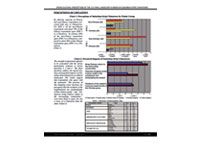 |
 |
 |
Respondents perceived both sites as Chinatowns. However, those who indicated suburban-strip Chinatowns bring Chinese culture to surrounding communities through their ethnic motifs and landscaping were more likely to agree that one site is more of a Chinatown than the other. |
 |
 |
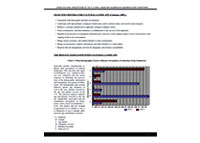 |
 |
 |
The following five charts show the results associated with cultural landscapes as defined by Coleman's criteria for cultural landscapes. Results indicate that age and distance traveled are significantly associated with respondents' perceptions of suburban-strip Chinatowns as cultural landscapes. |
 |
 |
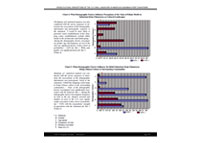 |
 |
 |
Gender, age and frequency of visit influenced perceptions ethnic motifs' value to suburban-strip Chinatowns as cultural landscapes. While, frequency of visits, distance traveled and number of years in the U.S. influenced the belief they bring Chinese culture to surrounding communities. |
 |
 |
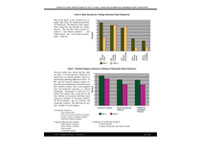 |
 |
 |
Primary reasons for visiting suburban-strip Chinatowns include to "buy Chinese products," to "eat Chinese food," and to "visit Chinese environment." Analysis of desired changes to increase visitation produced three major categories: Economic Features, Social/Educational Features, and Aesthetic/Landscape Features. |
 |
 |
 |
 |
 |
Amongst the landscape elements investigated in the visual preference survey, the addition of an "Entry feature" produced the only statistically significant results. |
 |
 |
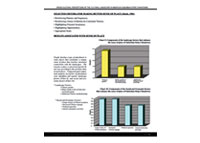 |
 |
 |
Using principal component analysis, two main factors were identified that enhance the sense of place of both sites: landscaping which includes Chinese gardens, ethnic motif plantings and cultural elements, and utilitarian factor of larger variety of Chinese products and signage. |
 |
 |
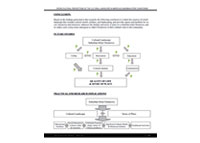 |
 |
 |
The results indicated that by including appropriate cultural motifs, artifacts, and landscapes, the threshold criteria for cultural landscapes can be reached in suburban-strip Chinatown. The research findings have wide implications on the social, economic, and cultural values of suburban-strip Chinatowns. |
 |
 |
|
 |